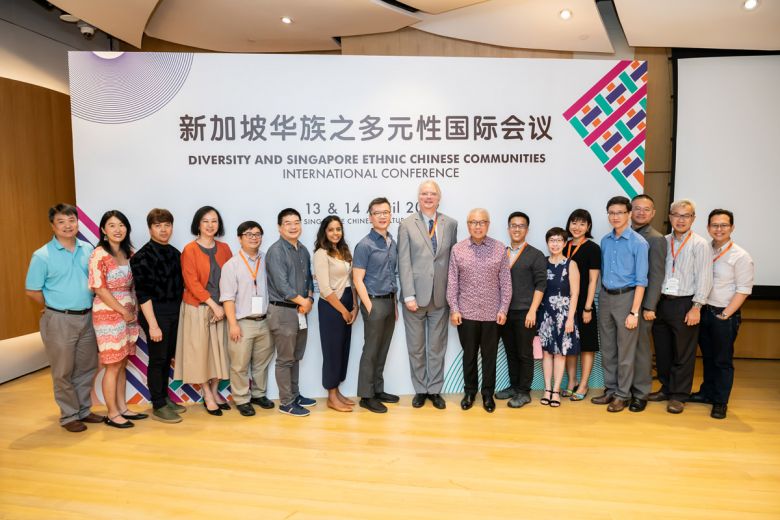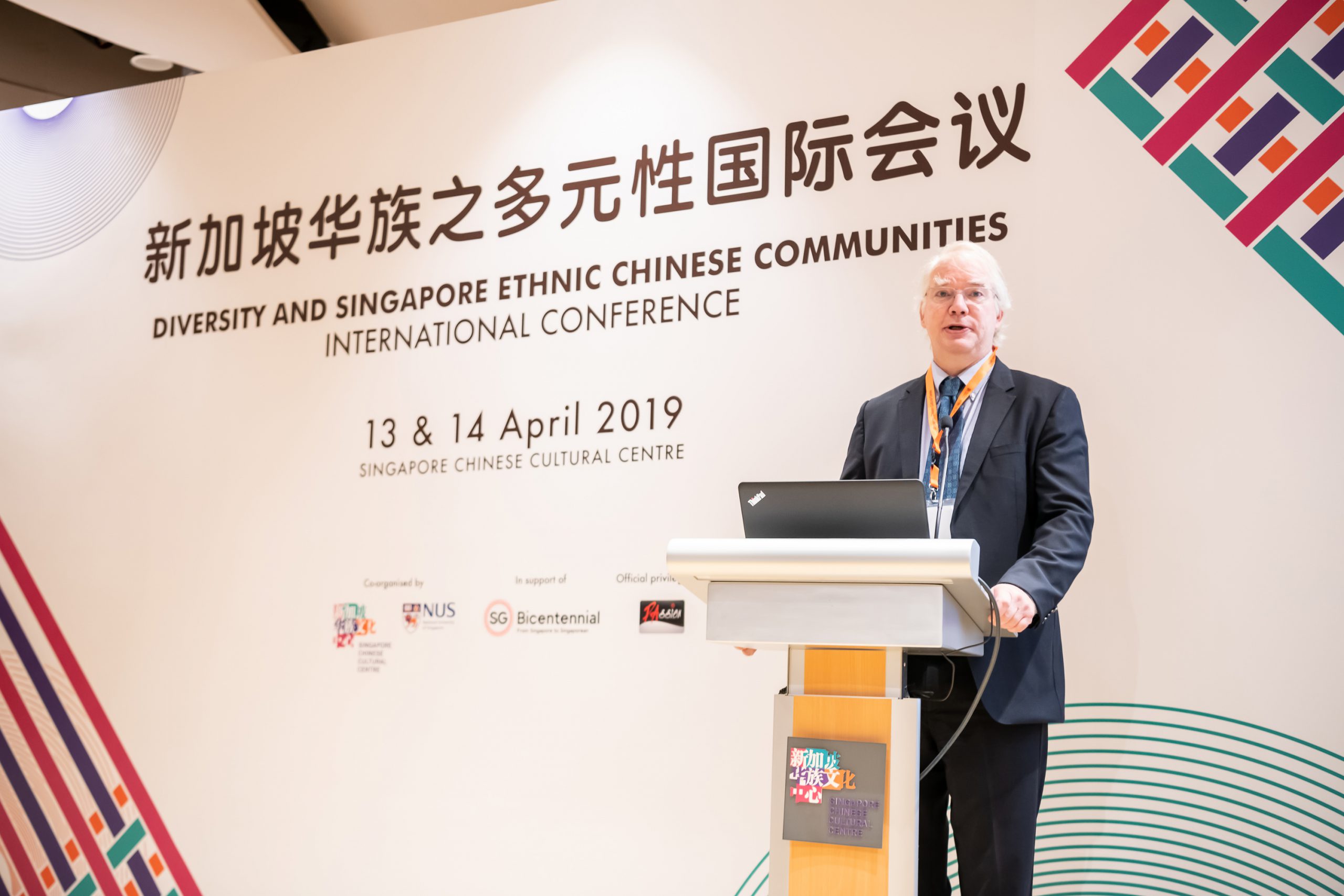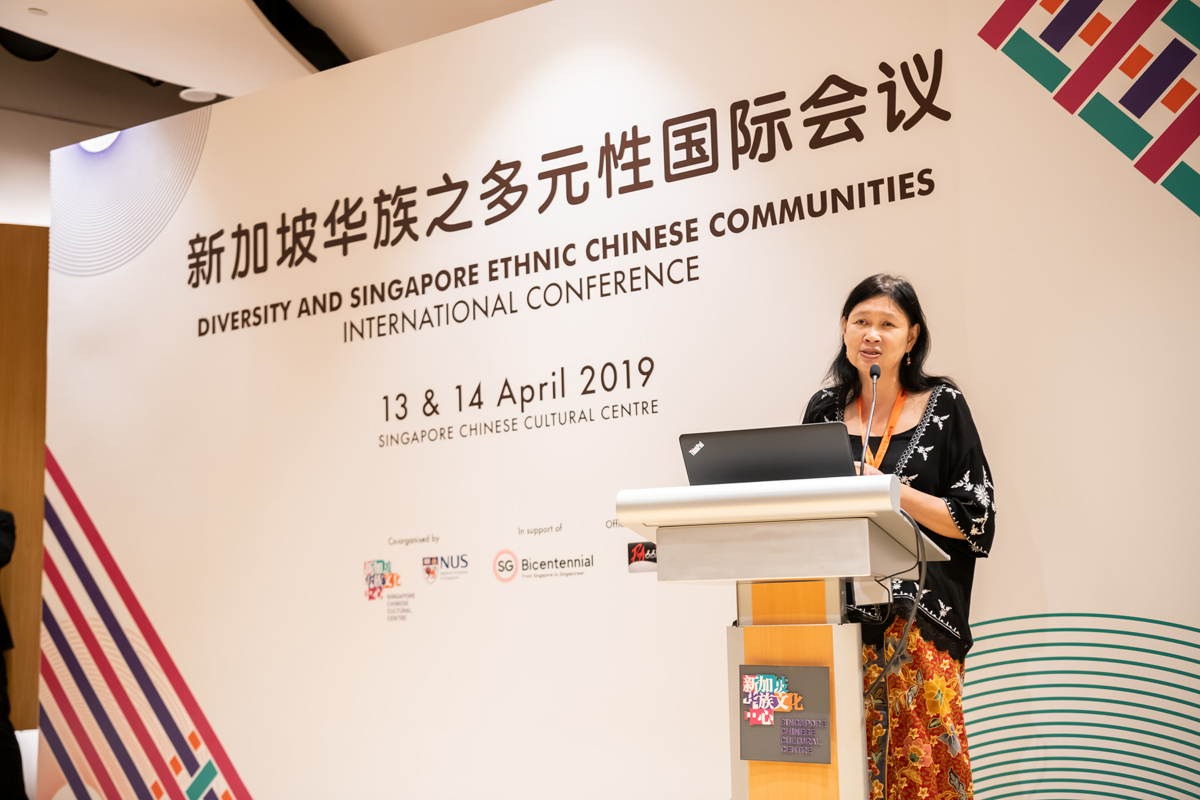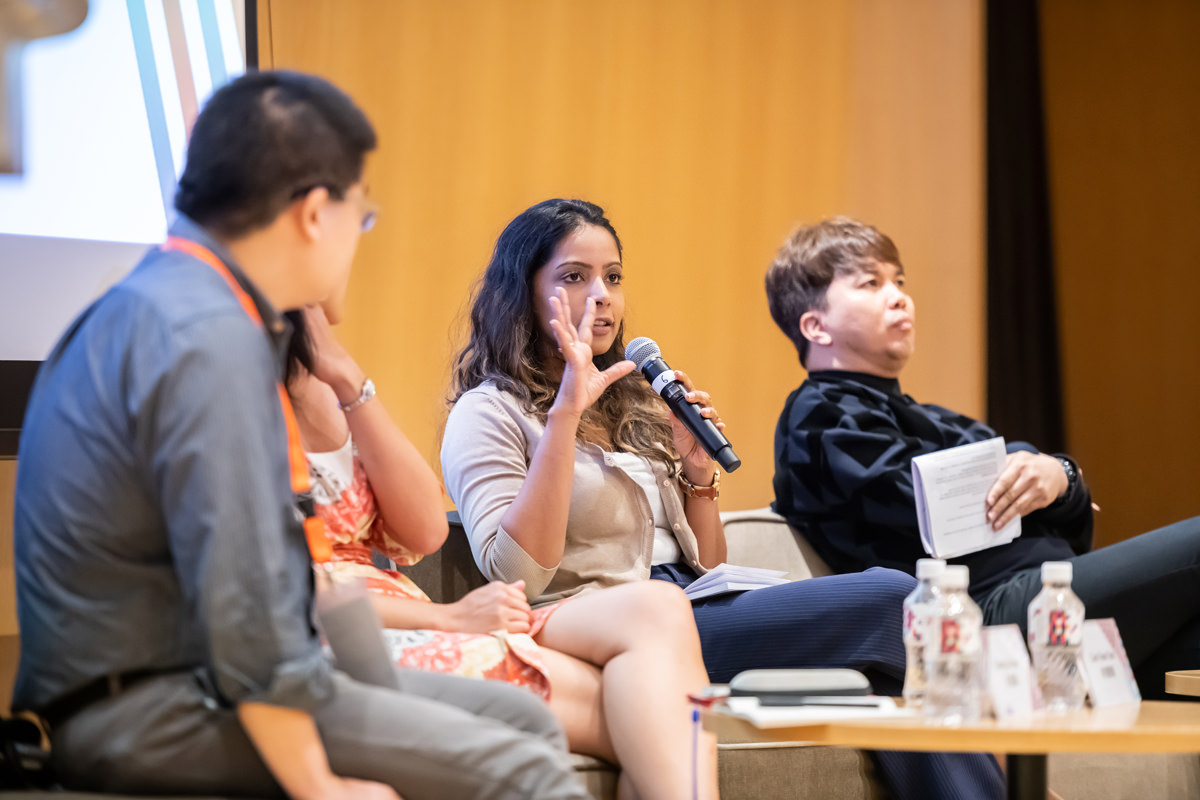Staying rooted in a pluralistic modern world
April 23, 2019
Source:The Straits Times PUBLISHED APR 23, 2019, 1:15 PM

Some of the panelists with Mr Low Sze Wee, CEO of Singapore Chinese Cultural Centre (eighth from left), Prof Kenneth Dean from National University of Singapore (centre), and Mr Chua Thian Poh, Chairman of Singapore Chinese Cultural Centre (eighth from right). PHOTO: SINGAPORE CHINESE CULTURAL CENTRE
Singaporean academics explore different aspects of the Singapore Chinese community
Last August, local singer Novabelle Ng, 28, posted a Cantonese rendition of popular National Day Song “Home” on Facebook. It went viral.
So did local rapper Shigga Shay’s multilingual rap single “LimPeh” (father in Hokkien). The song has since clocked more than 880,000 views on YouTube since it was released in 2013. He was 21 years old at that time.
At a recent two-day conference held at Singapore Chinese Cultural Centre (SCCC) on April 13 and 14, one panelist cited them as examples of how young Singaporeans are expressing their Singaporean identities in their own unique ways.

Prof Kenneth Dean making his opening remarks at the event. PHOTO: SINGAPORE CHINESE CULTURAL CENTRE
“We need to look at bottom-up efforts by young Singaporeans, dialect content created by youth for youth. They value content that is spontaneous and carries genuine emotions. Of course, humour is always good to generate popularity,” said Adjunct Assistant Professor Brenda Chan of the Department of Chinese Studies, National University of Singapore, on the second day of the conference.
Preserving dialects is key to Singaporeans’ identity and well-being, said Assistant Professor Nala Lee of the Department of English Language & Literature, National University of Singapore. Only 16.1 per cent of Singaporean Chinese spoke Chinese dialects most frequently at home, according to Statistics Singapore's General Household Survey 2015. The figure has been declining over the years.
Baba Malay — an integral part of the Peranakan identity in this part of the world — is also dying out in Singapore.
“Language is a store of knowledge, and there is value in linguistic diversity,” said Dr Lee.
She cited Baba Malay (or Peranakan Malay) as a unique repository of the fusion culture and identity of its speakers. Baba Malay words in Singapore are influenced mainly by Malay, with various words from languages such as the Hokkien dialect, Portuguese and Dutch.
“For example, kinship terms in Baba Malay — words relating to household matters, ceremonies and religion, food and medicine, time and measurement, emotion and judgement — are mainly influenced by Hokkien origin, but without Hokkien tones,” Dr Lee said.
She added that Baba Malay is now critically endangered because of English-medium education that began with the British administration, and the rise of inter-marriages between Peranakans and other Chinese communities.
There are an estimated 1,000 fluent Peranakan speakers in Singapore.
The only way to revive dying languages or dialects is through engaging the young; social media could be an efficient avenue to reach out to the young and reconnect them with their roots, said Dr Chan.
She added that the challenge is to revive Chinese dialects while continuing the English and Mother Tongue two-language track implemented in schools. To do so, she advocates looking beyond the utilitarian value of dialects, and giving more prominence to their intrinsic cultural value.
“Being Chinese gives me tremendous autonomy to make sense of my being and existence, enabling me to negotiate - and to impart to my children (only one of whom is learning Chinese) - the power of being Chinese both by descent and consent.” --- Associate Professor Terence Lee, Communication & Media Studies / Cluster Leader, Communication & Society, Murdoch University
Identities in Flux
Organised by Singapore Chinese Cultural Centre and National University of Singapore's (NUS) Department of Chinese Studies, the inaugural Diversity and Singapore Ethnic Chinese Communities International Conference brought together 24 Singaporean academics from local and overseas institutions to explore different aspects of the Singapore Chinese community — identity, religion, literature, language and popular culture. The conference saw close to 100 attendees.
Over two days, the scholars discussed how the early migration of forefathers from different lands to the shores of Singapore, post-colonial realities, multiculturalism and other factors influence the evolution of a Singaporean identity among ethnic Chinese in Singapore.

Dr Elaine Ho from National University of Singapore sharing on "Co-ethnic Relations in Singapore, Between Being a ‘Diaspora Hub’ and a nation-state". PHOTO: SINGAPORE CHINESE CULTURAL CENTRE
In the digital age, opinions on race and ethnicity in Singapore — far from being just the purview of policy papers and academic discourse — are increasingly being shaped online by Singaporeans, said Assistant Professor Liew Kai Khiun of the Wee Kim Wee School of Communication and Information, Nanyang Technological University.
A common portrayal of Singapore is that of an ethnic Chinese majority state with a multicultural setting, noted Associate Professor Chong Ja Ian of the Department of Political Science at the National University of Singapore.
However, with increasing plurality, it is important to understand that the idea of a Singapore Chinese culture is not a historically fixed or homogeneous idea, but an area that will continue to be contested, he added.
In particular, he saw public discussions on matters relating to perceived Chinese privilege as well as preventing the marginalisation of minorities as key to promoting plurality in the society.
“We need to think about the values of multiculturalism that underpin the Singapore state, and how to enact them in national policies and legislation. This will move Singapore ahead in a pluralistic and interconnected world where racial tensions are on the rise,” he said.

Keynote speech by Prof Brenda Yeoh from National University of Singapore on "Transnational Migrations and Plural Diversities in Postcolonial Times". PHOTO: SINGAPORE CHINESE CULTURAL CENTRE
Singaporeans First
Delivering her keynote speech on “Transnational Migrations and Plural Diversities in Postcolonial Times”, Professor (Provost’s Chair) Brenda Yeoh noted: “Singapore is the ‘demographic child’ of overlapping diasporas — processes of mixing, fusion and hybridisation adapted from multiple cultures of origin.
“Diversity is not just about diversity of people, but also diversity of hybridisation.”
The director of Humanities & Social Science Research, Office of the Deputy President, NUS, said that changes are afoot as the Singaporean identity becomes more prevalent in place of racial identity.
For one, the greater acceptance among the populace of hyphenated identities (a Singaporean is Singaporean first, and then Chinese, Malay, Indian, Eurasian or some other ethnicity at the same time), as evidenced in national surveys, signals a liberalisation of identity politics.
“This is a major step towards more flexible thinking about race, cultivating cosmopolitan sensibilities, and accommodating difference,” she added.
The conference concluded with a roundtable discussion with researchers of local Malay and Indian cultures, providing a platform for different ethnic groups to understand each other better.

A roundtable discussion between Prof Lim Sun Sun from Singapore University of Technology and Design (second from left), Dr Laavanya Kathiravelu from Nanyang Technological University (centre) and Dr Azhar Ibrahim from National University of Singapore (right). PHOTO: SINGAPORE CHINESE CULTURAL CENTRE
“New Chinese migrants are far from homogeneous. There is the laoyimin (老移民) who migrated during the 1990s or early 2000s, whose own upbringing and outlook are shaped by conditions of China when they grow up in modest conditions. There is also the xinyimin (新移民) who mostly consist of rich entrepreneurs and investor migrants who may not interact much with locally-born Singaporeans in daily lives (such as in immigration and housing policy) and thus face challenges in integration.” --- Associate Professor Elaine Ho, Department of Geography, National University of Singapore

